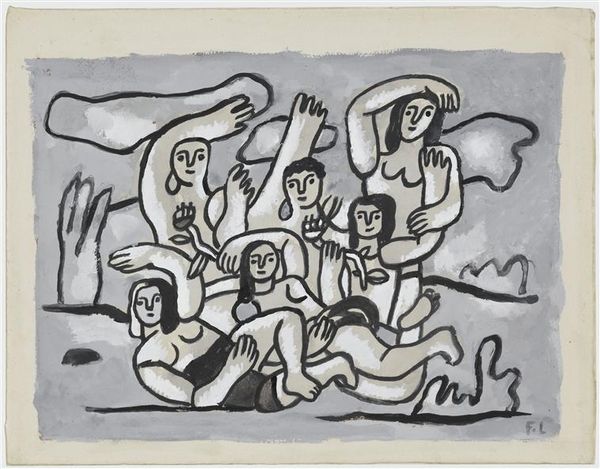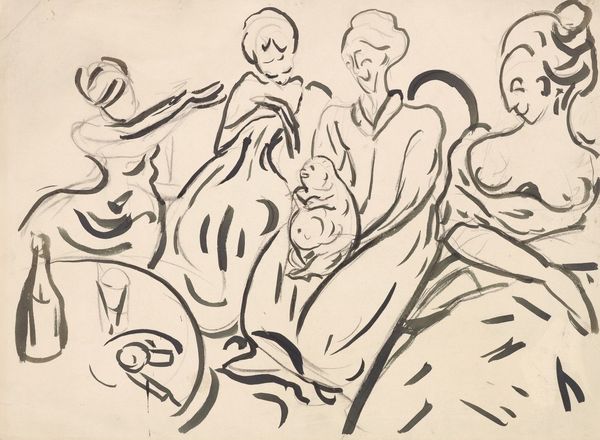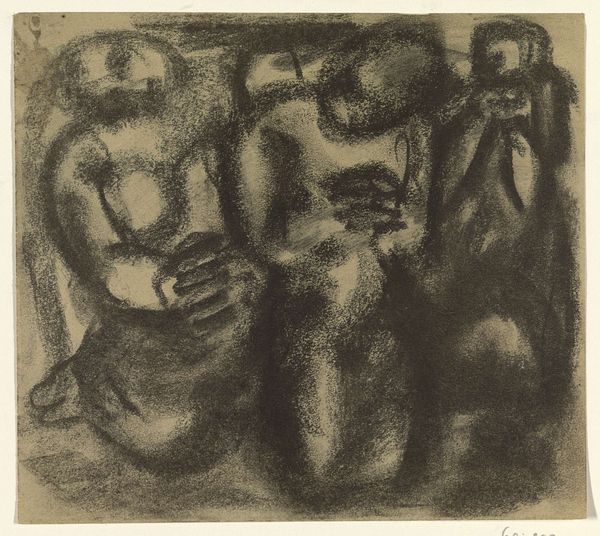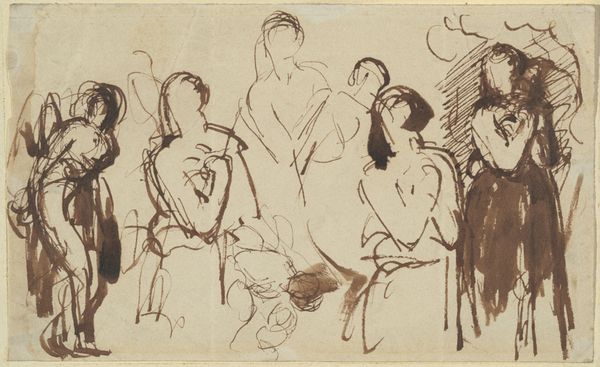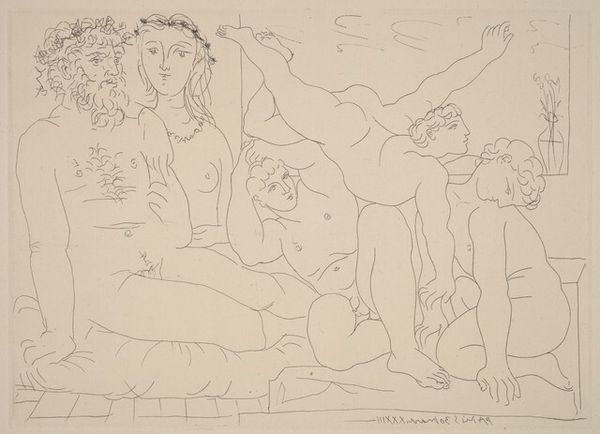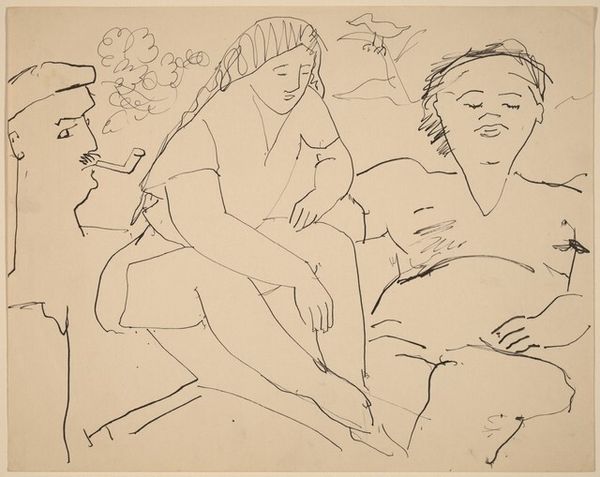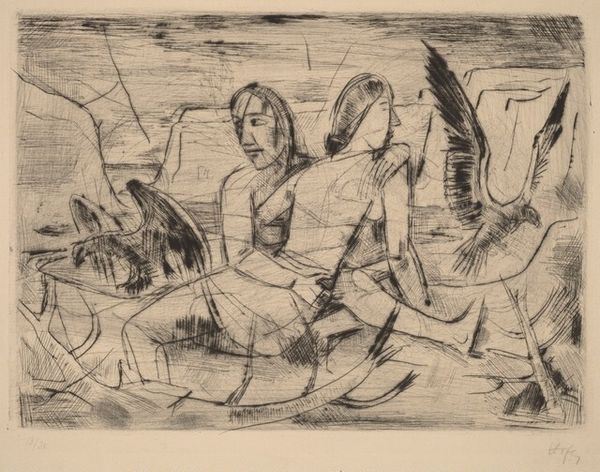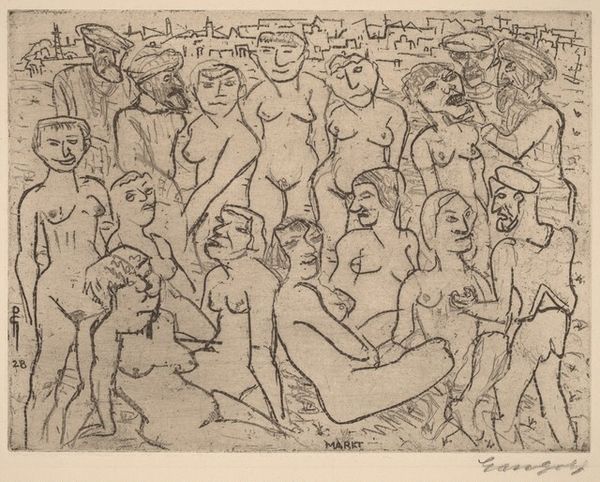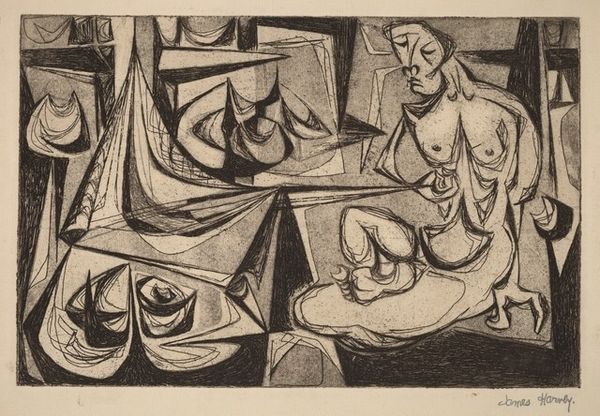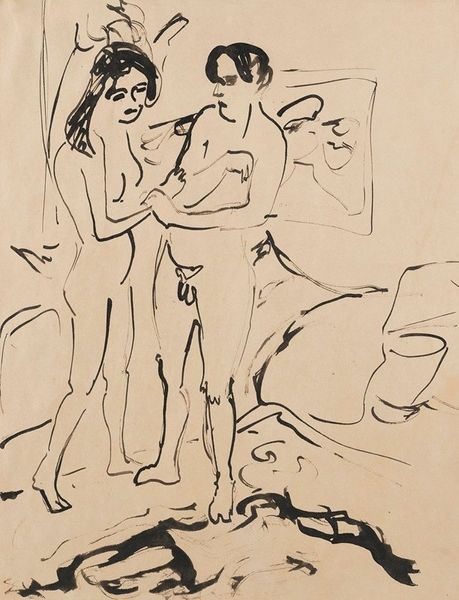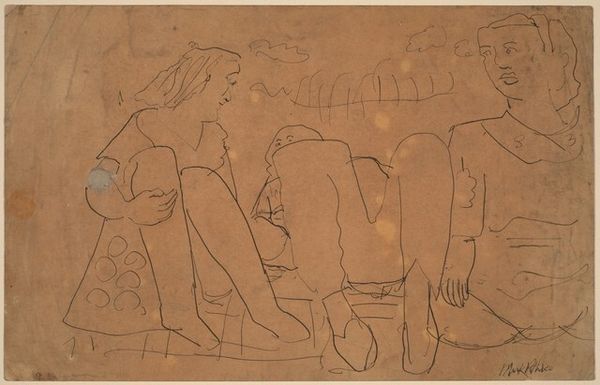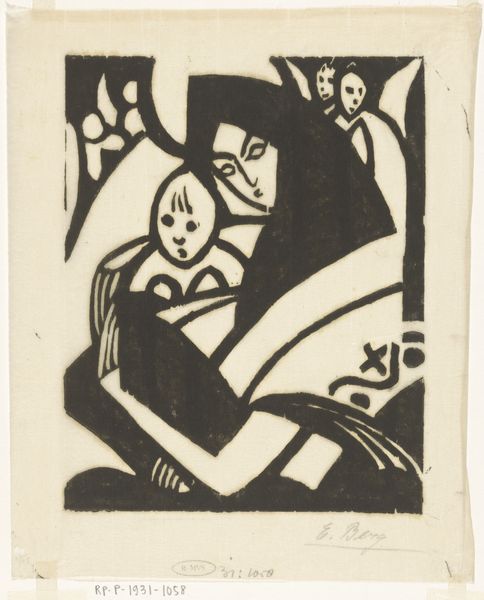
drawing, ink, pencil
#
drawing
#
cubism
#
figuration
#
ink
#
sketch
#
group-portraits
#
pencil
#
modernism
Dimensions: 24 x 31.9 cm
Copyright: Fernand Leger,Fair Use
Editor: Here we have Fernand Léger's "Study for The Bathers," a drawing in ink and pencil. I find the composition really intriguing – a cluster of figures, seemingly disconnected yet together on the page. What do you see in this piece? Curator: I see Léger grappling with representation in a rapidly industrializing world. Think about it: he's working during a time of immense social upheaval, shifting gender roles, and the rise of the machine. These bathers aren't the idealized nudes of the past. Instead, they appear almost…mechanized, fragmented. What does this fracturing say about the changing role of women in society during this era, particularly regarding agency and identity? Editor: Mechanized women... It's as if their bodies are becoming part of the industrial landscape. But I’m wondering, is there also a sense of communal strength implied in this cluster? Curator: Exactly! We might read this gathering as a powerful symbol of female solidarity against a backdrop of patriarchal structures. Cubism allowed for multiple perspectives to be represented simultaneously. How might these figures collectively defy traditional patriarchal modes of representation? Consider their gazes – where are they looking? Editor: Some engage directly, while others seem turned inward. I guess that this combination defies singular narratives... they claim their own individual spaces. Curator: Precisely! By challenging fixed perspectives, Léger, intentionally or not, provides them agency. We must remember art doesn’t exist in a vacuum. Consider what movements were happening contemporaneously, politically, socially and geographically in relation to Leger and to his ‘Bathers’. How might a movement like women's suffrage relate to the agency we find represented in this drawing? Editor: That makes the image feel less like a study and more like a statement. Curator: A statement, a question, a provocation. Art serves as a lens through which to interpret, analyze, and critique society, hopefully revealing new avenues for awareness. Editor: I see that now. I will never look at Léger the same way again.
Comments
No comments
Be the first to comment and join the conversation on the ultimate creative platform.
